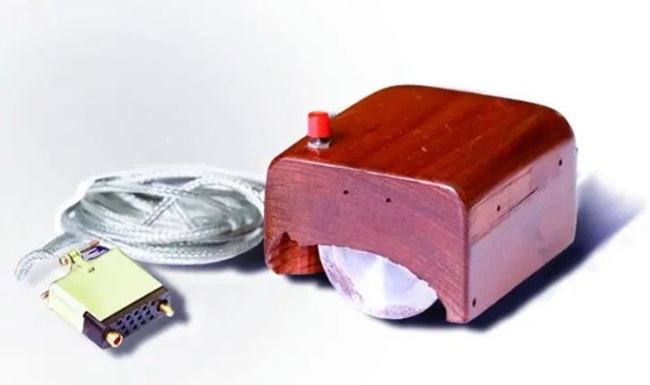Longevity, influence and the social media trap: Who do we trust with our health?
In a world where six-pack abs are flaunted more than six-point health plans, who are we really trusting […]

In the world of modern technology, where sleek, ergonomic computer mouse are prevalent, the device’s progress has been nothing short of remarkable, ranging from fashionable wireless models to ergonomic designs specifically intended at gamers. Few people realise, however, that the original computer mouse was nothing like the complex devices we use today. It was actually made of wood.
The early 1960s saw the brilliant American engineer and inventor Douglas Engelbart come up with the idea for the computer mouse. The goal of Engelbart’s groundbreaking work at the Stanford Research Institute (SRI) was to advance the still-emerging science of human-computer interaction. His objective was to develop a tool that would facilitate human-computer interaction. At the time, computers were intricate, room-sized devices largely utilised by specialists.
The pivotal moment for Engelbart happened on December 9, 1968, at what is now renowned as “The Mother of All Demos.” Engelbart presented a number of computer technologies in this historic demonstration, including word processing, collaborative real-time editing, hypertext, video conferencing, and more. These technologies would soon become standard. The first of these inventions was the first public demonstration of the computer mouse.
Together with his coworker Bill English, Engelbart created the first mouse, a straightforward yet clever contraption. It had two metal wheels on the bottom that were perpendicular to each other and a single button on top of a small, rectangular block of wood. By pushing the gadget across a flat surface, these wheels enabled the device to detect movement in the X and Y axes. Upon rotation, the wheels generated electrical signals that were subsequently processed by the computer to produce on-screen cursor movements.
Engelbart’s mouse was groundbreaking, but it took some time for people to start using it. The mouse did not become a common input device until the 1980s, with the introduction of personal computers such as the Apple Lisa and Macintosh. Compared to Engelbart’s wooden prototype, these early commercial mice had more buttons, a more ergonomic design, and were constructed of plastic.
People’s interactions with computers have been radically altered by the mouse, which has increased accessibility and user-friendliness. The development of graphical user interfaces (GUIs), which replaced text-based command lines with visually appealing interfaces, was made possible by the mouse. This change made using computers more accessible to a wider range of people by eliminating the need to learn sophisticated programming languages or commands.
Douglas Engelbart’s wooden mouse was more than just a technical innovation; it was a symbol of his broader vision for computing. Engelbart envisioned computers as tools to augment human intelligence and improve society. His work laid the foundation for many of the technologies and principles that define modern computing.
Although it took years for the mouse to become a standard computer accessory, its impact was profound. It paved the way for graphical user interfaces (GUIs) that made computers more accessible and user-friendly, transforming the way people interacted with technology.
Engelbart’s wooden mouse stands as a testament to innovation and the power of simple ideas to change the world.

In a world where six-pack abs are flaunted more than six-point health plans, who are we really trusting […]

In the era of social media, post-COVID, and with mental health at the forefront, a shift is taking […]